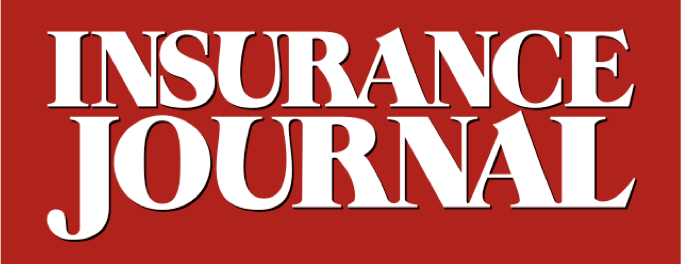I watched as the skies over my home in Los Angeles turned an apocalyptic orange on January 7, 2025, as wildfires raged across the state. Among the most devastating, the Palisades Fire consumed thousands of acres, leaving a wake of destruction that has pushed California to reckon with its wildfire management strategies.
The fires, fueled by relentless Santa Ana winds, have laid bare vulnerabilities in wildfire prevention, urban planning, emergency preparedness, and the state’s ability to adapt to escalating climate threats.
As a resident, and as a risk professional, the devastation has been staggering to witness. The fire has destroyed over 12,000 structures, including iconic landmarks such as the Will Rogers State Historic Park and the Topanga Ranch Motel. Schools and places of worship, including Palisades Elementary and St. Mark’s Episcopal Church, have been reduced to ash.

Preliminary estimates peg the at over $250 billion, with insured losses alone surpassing $30 billion, making this the costliest wildfire event in global history. As of January 14, 25 lives have been lost, with hundreds of injuries, including a firefighter battling life-threatening injuries. Nearly 150,000 residents have been evacuated, their futures uncertain as California grapples with the aftermath.
A Shifting Landscape of Å˽ðÁ«´«Ã½Ó³» Coverage
The financial implications of this crisis extend far beyond the immediate recovery. The fires have exacerbated an already strained insurance market, impacting availability and affordability for consumers.
The exodus of major insurers and policy non-renewals have left many homeowners relying on the California FAIR Plan, the insurer of last resort. From 2023 to 2024, the number of FAIR Plan policies surged, with residential exposure ballooning from $271 billion to .
The strain on the FAIR Plan’s solvency is evident, particularly with its in high-risk areas like Pacific Palisades. Simultaneously, reinsurance rates have soared by driving premium increases that further burden homeowners.

While the immediate effects are most pronounced in California, the broader insurance market is also impacted. Insurers operating nationally may reassess their exposure to wildfire risks, leading to adjustments in coverage availability and pricing in other states with similar vulnerabilities. Additionally, the reinsurance market’s response to these events can influence global pricing and capacity.
California’s insurance woes highlight a deeper systemic challenge: the interdependence of insurance and risk management. As insurers retreat from high-risk areas, it is incumbent on state and local governments to step in with proactive measures to mitigate risks and reduce the severity of catastrophic losses. This crisis underscores the need for California to mobilize its full arsenal of tools to address the growing wildfire threat.
California’s Wildfire Mitigation Budget
The effectiveness of wildfire mitigation hinges on the adequacy and intelligent allocation of resources. California’s firefighting capabilities have seen significant investments in recent years.
Gov. Gavin Newsom’s administration has increased CalFire’s budget from $2 billion to $3.8 billion since 2019, reflecting a commitment to enhancing the state’s wildfire resilience. However, the $101 million cut to wildfire prevention funding for the 2024–25 fiscal year has raised concerns about the sufficiency of these efforts.
California possesses a robust toolkit to combat wildfires, but its deployment requires coordinated action at every level of government.
State-level measures
- Legislative support. Laws like SB 901 (2018) and AB 38 (2019) have laid the groundwork for vegetation management and home hardening programs. However, bureaucratic delays have hampered their full implementation. Expediting these efforts is essential.
- Executive orders. Gov. Newsom’s 2019 Executive Order N-05-19 prioritized wildfire prevention projects, fast-tracking efforts in vulnerable regions. Expanding similar directives could bolster statewide preparedness.
Local-level strategies
- Urban planning. Revising zoning laws and mandating fire-resistant construction can significantly reduce vulnerabilities in high-risk areas. Ventura County’s Fire Safe Building Code stands as a model for other jurisdictions.
- Community engagement. Programs like Firewise USA empower communities to create localized wildfire mitigation plans, fostering resilience at the neighborhood level.
Utility partnerships and infrastructure upgrades
- Modernizing power grids. Accelerated efforts to bury power lines and install weather-resistant infrastructure, as required by AB 1054 (2019), are among the upgrades vital to reducing ignition risks.
- Early detection systems. Investments in technology including satellite-based fire monitoring and AI-enabled predictive models can enhance early warning capabilities and resource allocation.
Emergency preparedness
- Training and deployment. Expanding the training of firefighters and first responders helps ensure that California can meet the demands of increasingly frequent and severe wildfires.
- Resource investments. Building a larger fleet of aerial firefighting equipment and improving evacuation logistics are critical components of an effective response strategy.
Despite these tools and strategies, gaps remain. Fragmented coordination between state and local governments continues to hinder efficiency. Advanced wildfire detection technologies remain underfunded, and inconsistent budget allocations risk undermining long-term resilience. Addressing these gaps requires sustained commitment and collaboration among policymakers, industry stakeholders, and communities.
The Role of Public-Private Partnerships
Addressing California’s wildfire crisis will also require leveraging the strengths of both the public and private sectors. Public-private partnerships (PPPs) offer a powerful framework to pool resources, expertise, and innovation to mitigate wildfire risks and enhance recovery efforts.
Private companies can contribute significantly through technology and infrastructure investments. For example, partnerships with technology firms can facilitate the deployment of advanced wildfire detection systems, such as satellite-based monitoring and AI-driven predictive modeling. These tools can enhance early warning capabilities and improve resource allocation.
Utilities also play a critical role. Collaborative programs between the state and utility companies, such as PG&E’s ongoing efforts to underground power lines in high-risk areas, demonstrate how shared investments can reduce ignition risks.

Similarly, construction and engineering firms can partner with local governments to rebuild with fire-resistant infrastructure and implement zoning changes that prioritize safety.
The financial sector is another key partner. Insurers and reinsurers can work with the state to develop innovative risk-sharing mechanisms and incentivize homeowners to adopt fire-resistant measures. Grants or subsidies for home hardening and community preparedness initiatives can amplify these efforts, bolstering participation and resilience.
By fostering collaboration across industries, California can accelerate the pace of wildfire mitigation and recovery, leveraging the expertise and resources of the private sector to complement public initiatives.
Lessons Learned: Downstream implications
The aftermath of California’s wildfires reaches far beyond the charred landscapes and destroyed properties. These events highlight severe downstream implications for housing, agriculture and public health, emphasizing the interconnectedness of wildfire impacts on society.
- Housing. The destruction of homes in high-value areas like Pacific Palisades exacerbates California’s ongoing housing crisis. With the state already grappling with a shortage of affordable housing, the loss of these residences is likely to drive up property prices and rents in unaffected regions. This shift may deter future development in fire-prone areas, further straining housing availability.
- Agriculture. The fires have decimated farmland and vineyards, reducing crop yields and impacting local economies and supply chains. Smoke exposure can also degrade the quality of produce, leading to financial losses for farmers and downstream effects on food availability and pricing.
- Public health. Hazardous air quality levels across Los Angeles and surrounding regions have resulted in widespread respiratory issues. Vulnerable populations, including children and the elderly, are particularly at risk, with long-term health consequences likely to emerge from prolonged exposure to fine particulate matter. Additionally, stress and displacement caused by evacuations contribute to mental health challenges.
Understanding and addressing these downstream effects is essential for California to fully recover and build resilience against future crises.
Lessons Learned: Å˽ðÁ«´«Ã½Ó³» and Risk Management
The Palisades Fire illustrates the intricate relationship between insurance and risk management. When private insurance markets restrict coverage or make prices prohibitive for consumers due to solvency, profitability, or reinsurance capacity limitations, that’s where risk management comes into play.
California can use risk management strategies in three key areas to reduce reliance on insurance payouts:
- Wildfire prevention. Expanding vegetation management, upgrading utility infrastructure and deploying advanced detection systems can significantly reduce wildfire risks.
- Urban planning. Strengthening building codes and revising zoning regulations can protect properties and reduce future losses.
- Emergency preparedness. Enhancing firefighter training, resource allocation and community preparedness ensures a swift and effective response to disasters.
Moving Forward With Optimism
As Los Angeles prepares to host the 2028 Olympics, my home of California faces a defining moment. The state has an opportunity to transform its wildfire mitigation efforts into a global model of resilience and innovation. By addressing gaps in funding, leveraging technology and fostering collaboration at every level, California can rise from the ashes of this crisis stronger and more prepared.
The road ahead will not be easy, but the resolve of Californians combined with decisive action provides a beacon of hope. Together, we can ensure a safer, more sustainable future for our communities.
Lee is an actuary, content creator and public speaker known to the insurance community by his podcasting moniker, The Maverick Actuary. He has 13 years of property/casualty experience in North America, and he’s a senior solutions advisor at data and AI firm SAS.
Topics Catastrophe California InsurTech Wildfire Agribusiness Reinsurance Market Training Development
Was this article valuable?
Here are more articles you may enjoy.


 Mangrove, Another New Property Insurer, Enters Florida Market
Mangrove, Another New Property Insurer, Enters Florida Market  Progressive Net Income More Than Doubles in 2024
Progressive Net Income More Than Doubles in 2024  Å˽ðÁ«´«Ã½Ó³» Group Touts Major Victory Over FCC Rule That Would Have Limited Robocalls
Å˽ðÁ«´«Ã½Ó³» Group Touts Major Victory Over FCC Rule That Would Have Limited Robocalls  American Airlines DC Aircraft Collision Leaves No Survivors
American Airlines DC Aircraft Collision Leaves No Survivors 

